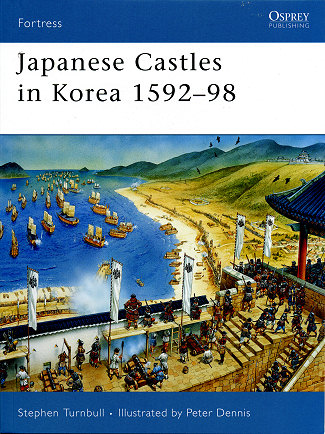 Most
all of us have heard of the samurai. These were the personal guards and
sometimes armies of prominent and powerful rulers in Japan. The Japanese spent a
considerable amount of time fighting each other over the years and these men
were the ones who did the majority of the fighting. However, there were times
when Japan was united and one of them was in the late 1500s. During this time,
and only during this time, the samurai were used against a foreign power. In
this case it was Korea.
Most
all of us have heard of the samurai. These were the personal guards and
sometimes armies of prominent and powerful rulers in Japan. The Japanese spent a
considerable amount of time fighting each other over the years and these men
were the ones who did the majority of the fighting. However, there were times
when Japan was united and one of them was in the late 1500s. During this time,
and only during this time, the samurai were used against a foreign power. In
this case it was Korea.
During this period of occupation that lasted from 1592-1598,
the Japanese built a number of wajo or castles, mostly along the southern coast
of Korea. Many of these were built on sites of Korean fortifications, but were
distinctly Japanese in their design. For the most part, they were able to
withstand the onslaught of not only the Koreans, but later the Chinese, this
despite the huge disparity between the numbers of attackers and defenders. Of
course all this manpower against the Japanese finally forced them to leave and
return to Japan, leaving their wajo behind. Fortunately for modern
archeologists, the Koreans did nothing to upgrade or improve these sites over
the years so what is left is true 16th century Japanese fortification
construction.
The history of the Japanese in Korea at this time and the
design and development of castles and fortifications is thoroughly investigated
by author Stephen Turnbull, one of the world's leading experts on the Japanese
of this period. The book includes not only the physical plant, but also the
weapons used, the lives of the men who maintained and fought there, and the use
of these facilities during attack. Each site is examined and its positive and
negative aspects are discussed.
All of this is additionally enhanced by photos of the current
sites, period art work and the illustrations of Peter Dennis. Though some of the
fortifications are either gone or inaccessible, many are still extant and those
areas are shown and discussed.
In all, a superb addition to the Fortress series and a book
that I believe you will find interesting.
December 2007
For more on the complete line of Osprey books,
visit www.ospreypublishing.com. In the US, it is
Osprey Direct at 44-02 23rd St, Suite 219, Long Island City, NY 11101., where you can
get a catalogue of available books.
If you would like your product reviewed fairly and quickly, please contact
me or see other details in the Note to
Contributors.
 Most
all of us have heard of the samurai. These were the personal guards and
sometimes armies of prominent and powerful rulers in Japan. The Japanese spent a
considerable amount of time fighting each other over the years and these men
were the ones who did the majority of the fighting. However, there were times
when Japan was united and one of them was in the late 1500s. During this time,
and only during this time, the samurai were used against a foreign power. In
this case it was Korea.
Most
all of us have heard of the samurai. These were the personal guards and
sometimes armies of prominent and powerful rulers in Japan. The Japanese spent a
considerable amount of time fighting each other over the years and these men
were the ones who did the majority of the fighting. However, there were times
when Japan was united and one of them was in the late 1500s. During this time,
and only during this time, the samurai were used against a foreign power. In
this case it was Korea.